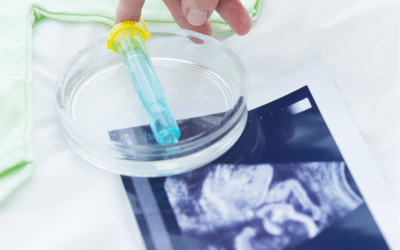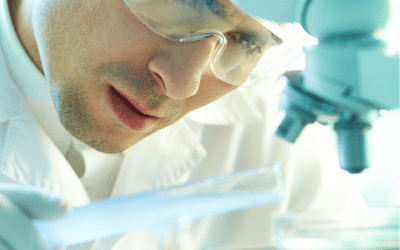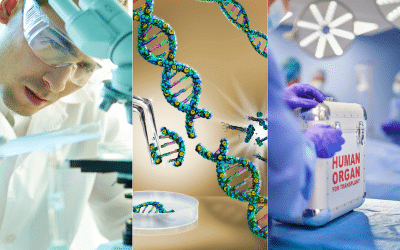On October 27, 2016 Alliance VITA’s study director, Blanche Streb, spoke during the public hearing of OPECST (the Parliamentary Office for Evaluation of Scientific and Technological Options). The subject was: “New technologies: possible applications and public discussion?” Her speech focused on the ethical and therapeutic implications for embryos.
« I wish to explore with you the new ethical challenges resulting from the use of the new bioengineering techniques and their impact on the human embryo.
1st point
The first genetically modified baby is already born: conceived in the secrecy of a lab, outside of any ethical regulation in a country where the laws do not explicitly forbid this practice. The child was conceived in-vitro using the controversial 3-parent IVF technique, by nuclear transfer in order to avoid transmission of mitochondrial disease.
With the baby’s birth announcement, the international community was confronted with a ‘done deal’. Once a child is born, it is more complicated to contest the manner in which he was conceived. Yet at least 5% of the defective mitochondria seem to have been “transferred” in the first fertilized cell. Besides this, there are many uncontrolled factors, which can be a threat for the future health of this child, who is a guinea pig for the technique used for his conception, and this is for life. The risk was taken: for this child, for his family. Are they not somehow manipulated? The American doctor who implemented this technique considers its use mainly for infertility problems.
The use of this technique did not heal anyone: it created someone.
We have been shocked to see how this event was publicized without practically any argument from the scientific community on such a violation.
More babies will be born soon in Ukraine using the 3-parent IVF technique. In these cases, it was not to avoid transmitting a genetic disease, but rather to “increase the fertility” of the sponsoring couple. The nuclear transfer took place in the donor’s eggs. A baby girl is expected: therefore the genetic modifications generated will be transmitted to future generations. No one can predict the future consequences.
Whether we like it or nor, this is setting a precedent. How can this headlong rush be reversed?
2nd point
In May, IFOP carried out a survey for Alliance VITA « The French and the CRISPR-Cas9 technique”. The results showed that 67% of the population is concerned by the fast growing research of scientists on the human genome. This must be heard: only clear ethical and fundamental guidelines can prevent science from being unfairly discredited.
A large majority (78%) is opposed to manipulations on the genome or on their own in-vitro embryos.
Sixty-eight per cent request that France commit to requesting international regulation for these practices.
France, as the emblematic country reputed for human rights and individual dignity has bioethical laws and organizations in place capable of defending these topics. Unlike some other countries, France does not have a utilitarian and limited vision of human beings. The CRISPR-Cas9 was implemented on human embryos in research laboratories in China, England, and Sweden. This technique, which today is neither safe nor efficient, will be improved. How can we be sure that one day scientists will not give in to the temptation of implanting transgenic embryos, as we have seen with the 3-parent IVF?
3rd point
In France, the total ban decided when writing the first bioethical laws is no longer applicable. The provision for research on embryos has changed inexorably.
It should be noted that “The law proclaims the primacy of the human person, forbids any violation of the individual’s human dignity, and guarantees respect of human beings from the moment of conception.”
With the new Health Law, the system allows biomedical research to be performed in a MAP context “on gametes intended to become an embryo, or research on the in-vitro embryo before or after its transfer for gestation purposes. The objective is to improve the efficiency of MAP or to prevent or cure embryonic pathologies.” But what are we talking about? We have the right to challenge and to ask questions.
When the Constitutional Court was consulted they emphasized the confusion in the formulation “there is no indication as to the objective of this research. The regulation is vague, ambiguous, and inconsistent.
This new regulation applied to the embryo falls under the general law for biomedical research, that is the general law for research on the human individual.
Science teaches us that nothing changes the embryo’s nature. How then can we explain that its status turns from laboratory ’material’ to a person, and vice versa, according to whether research is performed in a MAP context or not? Actually, doesn’t this Health law reveal the fraud of considering embryos as lab material?
How can we pretend to guard against the future risks of seeing genetic modifications applied on the human embryo, via a blurred and inconsistent system, which is not based on coherent, stable ethical principles anchored on human dignity?
4th point
These new biotechnologies challenge us and force us to understand the deeper objectives that are being pursued. And the means: one of which is the use of the human embryo.
The ethical debate about producing, manipulating, and destroying human embryos is still open. Having a more human conception of the embryo is possible, and more necessary than ever before.
An ethical reflection whose only concern is the technical applications leads us to a dead end.
Our position is to insist on the urgent need to protect human integrity, starting from its embryonic stage, against exploitation for individual or group purposes.
Isn’t our responsibility towards future generations to do everything possible today to maintain the respect of human rights for those who will live after us?
This is a health issue: to maintain safety, health requirements and ethical reproduction techniques.
Whereas genetic therapy with CRISPR-Cas9 and other possible techniques could prove promising for treating diseases, manipulating the human embryo, with the vision of correcting, transforming or improving it leads to commodification and fosters the delusion of refusing to accept that it is fragile.
Starting by « avoiding the worst case scenario » inevitably leads to pretending to search for the best, the perfect baby? Using these techniques to select genes is a slippery slope towards eugenics, whereby we all feel threatened.
These bioengineering techniques deserve the highest level of ethical vigilance. The only genuine research “progress”, cannot be disassociated from the good of mankind and all of humanity. It must be chosen, shared, reasoned and fair, aiming to improve the quality of life without altering his environment and henceforth human nature itself.”
>> See the 2nd video of the hearing on Alliance VITA’s YouTube:
OPECST Round Table – 27 October 2016
1Parliamentary Office for Evaluation of Scientific and Technological Options



